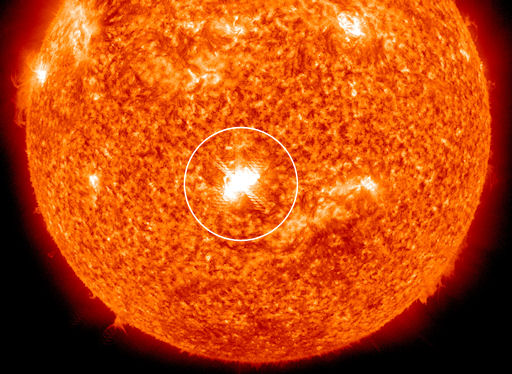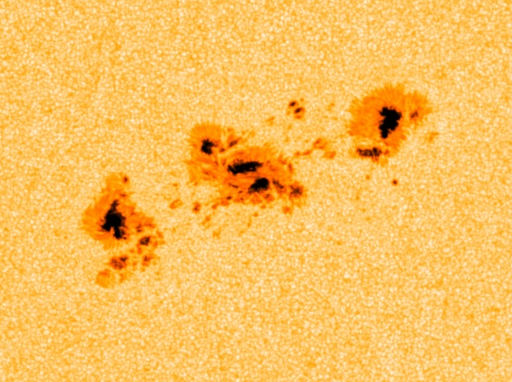Turn your cell phone into a field-tested satellite tracker. Works for Android and iPhone. | | | COMET ENCOUNTER-TONIGHT! NASA's Stardust-NExT probe is plunging toward Comet Tempel 1 for a Valentine's Day encounter designed to reveal how solar heat devours the icy cores of comets. Closest approach happens at 8:37 p.m. PST (11:37 p.m. EST) on Feb. 14th. Stay tuned for fantastic images. EARTH-DIRECTED SOLAR FLARE: On Feb. 13th at 1738 UT, sunspot 1158 unleashed the strongest solar flare of the year so far, an M6.6-category blast. NASA's Solar Dynamics Observatory recorded an intense flash of extreme ultraviolet radiation, circled below: 
The eruption produced a loud blast of radio waves heard in shortwave receivers around the dayside of our planet. In New Mexico, amateur radio astronomer Thomas Ashcraft recorded these sounds at 19 to 21 MHz. "This was some of the strongest radio bursting of the new solar cycle," he says. "What a great solar day." Preliminary coronagraph data from STEREO-B and SOHO agree that the explosion produced a fast but not particularly bright coronal mass ejection (CME). The cloud will likely hit Earth's magnetic field on or about Feb. 15th. High-latitude sky watchers should be alert for auroras. The source of this activity, sunspot 1158 is growing rapidly. Click on the image to launch a 2-day movie: 
Barely visible when the weekend began, the active region is now more than 100,000 km wide with more than half-a-dozen Earth-sized dark cores scattered beneath its unstable magnetic canopy. More Earth-directed eruptions are likely in the hours ahead. more images: from Luca Tesoro of Mercogliano (AV), Italy; from Michael Buxton of Ocean Beach, California; from Strikis Iakovos - Marios of Athens Greece (Haidari);
February 2011 Aurora Photo Gallery
[previous Februaries: 2010, 2009, 2008, 2007, 2006, 2004, 2003, 2002] Potentially Hazardous Asteroids ( PHAs) are space rocks larger than approximately 100m that can come closer to Earth than 0.05 AU. None of the known PHAs is on a collision course with our planet, although astronomers are finding new ones all the time. On February 14, 2011 there were 1198 potentially hazardous asteroids. Notes: LD means "Lunar Distance." 1 LD = 384,401 km, the distance between Earth and the Moon. 1 LD also equals 0.00256 AU. MAG is the visual magnitude of the asteroid on the date of closest approach. | | The official U.S. government space weather bureau | | | The first place to look for information about sundogs, pillars, rainbows and related phenomena. | | | Researchers call it a "Hubble for the sun." SDO is the most advanced solar observatory ever. | | | 3D views of the sun from NASA's Solar and Terrestrial Relations Observatory | | | Realtime and archival images of the Sun from SOHO. | | | from the NOAA Space Environment Center | | | the underlying science of space weather | | 
